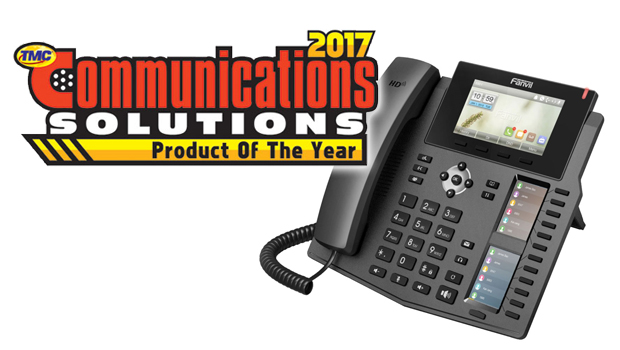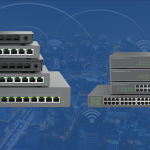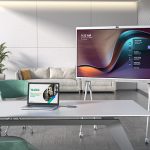Last Friday we had the opportunity to speak with Mark Trowbridge, CEO of Foncordiax, an interesting company that seems ready to take the retail world by storm with its new, off the shelf plug n’ go range of appliances that pretty much anyone can sell and any customer can setup and get going without a whole lot of intervention.
The product is set to launch this Wednesday. Listen to the podcast or read the summary below. If you’re running a small business, this is really interesting stuff.
[VoIPon] We understand that this product is going to be targeted at some specific vertical markets and this is supposed to be a very easy product to set up and get going. Can you walk us through a simple setup?
[Mark Trowbridge, CEO of Foncordiax] Yeah, I guess you’re talking about our new retail product, uh, which we devised really couple of months ago and we’re launching this Wednesday coming, the 18th of November.
So we spent quite a few months looking the hardware the branding the point of sale, and in particular the installation and configuration, really to ensure that retail outlets need little or no technical knowledge.
The first thing, I’d like to mention is that Foncordiax is a phone system. It’s not a PC converted into a phone system. Actually, we’ve started from the ground up and actually built the hardware centered on making it into a phone system. So you won’t actually find the normal connectors that you’d find on the back of a PC, you’ll just find the connectors that are there for the telephony, which means the end user is not getting confused as to where to put cables, plugs and things of that nature.
Then we took really the KISS approach, the keep it simple approach to configuration and worked on the basis that it’s easier to change something than it is to create something. That is to say we’ve actually built all the systems preconfigured to something that will probably suit 80% of clients. And then those that want to make amendments and changes can do. So, when they’ve actually unpacked the system it’s really ready to go, once they’ve plugged all the connections in.
So in essence, they’ve received the unit. Unpack it. Plug in the connectors. Plug in a handset. Go around to the PC if they want to make any changes. But generally they can just pick up a VoIP Phone and start making calls.
[VoIPon] In a recent news release, you announced that you would be integrating Sangoma boards into all of your appliances. Why should this be important for your customers?
[MT] Oh, really, really important! Over the last two years, we’ve used many components inside our systems, and they’re all good, there is nothing wrong with them, but Sangoma are a very special company. They’ve, we’ve tried to engineer a system that is the Royals Royce of IP PBXs. And Sangoma fit our ethos in terms of quality and in terms of backup and support.
You know, we haven’t had one Sangoma card go wrong on us in all the time we’ve installed them. And in terms of product development, they’re just streets ahead of anyone else, and at the end of the day they are a really nice bunch of guys to deal with. So they fit really nicely in with our model of trying to create top-notch product and reliable product that the consumer can you know, be satisfied will work for years to come.
[VoIPon] For VoIPon’s listener’s who are more involved in the telephony space, I think they’d like to know what’s running under the hood. Rumour has it that it’s basically Free PBX. But is it more? If so, what makes it different?
[MT] Yeah, it’s FreePBX. Fabulous operating system, if you like. It’s got some tweaks in it, some things that we’ve done and made some changes.
It’s a branded version of FreePBX.
But what I want to touch on is a phone system is much more than just the components within it. I used to build software solutions for companies based on SQL server and MS Access, which were both solid reliable systems and we’d charge a lot of money to end users for bespoke systems that they were very happy with. So taking FreePBX is really no different.
Joe Roper, the company’s CTO, likens it to baking a cake. You all can start with the same ingredients but some end up as flat pancakes. I like that analogy, because you know we have seen some dreadful end user appliances using FreePBX.
But moving on from that, I’d like to take that analogy a little further. Let’s say you do make good cakes, but now you want to start selling those cakes down at the local market. This starts to involve making them to a particular design, buying in more ingredients in quantity. Obviously there are financial restrictions and constraints on that: there is storage, transport, and more of your time.
Let’s take it a bit further, let’s say you want to sell it into local shops. There is pricing. There is packaging. Perhaps even bigger cookers are needed and perhaps a bigger kitchen and potentially some staff.
Now, let’s say someone in Australia wants to sell your cakes. You’re now into the realms of more staff, more stock, more accountancy and a whole host of other things that come into play.
Whilst FreePBX is under the hood, that doesn’t make the Foncordiax—the Foncordiax is made up a multitude of components and parts and people that turn it into a very robust, very reliable, very solid phone system that is going to be here for years to come.
[VoIPon ]What else might we expect to see from Foncordiax in the future? Are there any interesting products in the pipeline you’d like to share with VoIPon’s VoIP uncovered listeners?
[MT] Yeah, there’s actually loads! We’ve come up with our new range, which as I say is launching next week, which we think is going to excite the market place.
We’re not necessarily going after or attacking or approaching the open source sector. There is a lot of product already out there that fits that niche—some great open source software, PBX in a Flash and trixbox. And, there is equipment out there—Rhino for example, has a very good piece of equipment.
So, in terms of your listeners that are in the open source sector, we’re not looking to ‘steal the march’ on you or take any of your market away.
We’re really trying to get into the proprietary market place. And that’s really where we want to be with the Foncordiax as a brand.
So outside of our standard product range, which will suit many a business, we’re looking at some of the vertical markets.
We’ve got a fabulous new product, which is based on business centres and any sectors that have multi-tenant scenarios. And we’ll be launching that, looking at our marketing people, we’ll probably launch that around February or March of next year. But that will come complete with individual PBXs, billing platforms, and connectivity through Sangoma again and it will be just a fabulous product.
Other things that we’re going to be introducing into the Foncordiax itself: one of our distributors has requested that we build in video conferencing, so we’re looking at that. And that should be coming out I guess, January or February, we’ll have that as a module inside Foncordiax.
So lots to come!
[VoIPon] Do you have any predictions for the future of the telephony market in general and the future of the plug n’go type appliance?
[MT] Yeah, I think we kind of stumbled into the Plug n’go, really because we had a product that does install very, very, easily, so it’s a natural progression into that market place and really into the retail arena.
But, I’ve been looking at it long and hard, but when you think back thirty thirty-five years ago, when we used to buy PCs. There was a day when you’d buy your PC from a computer company, rather than a local shop.
And then good old Microsoft invented Windows, and it really opened up the whole market place in terms of being able to buy a PC from a local store, bring it home, connect it, and start playing with it.
And, I guess that’s what I’m seeing, or I feel we’re going to see in terms of phone systems.
We’re going to see phone systems being available, more readily available, even potentially via eBay, take it home, unpack it, plug it in and start working.
Um, and I think there will be an evolution of industries coming off the back of that in terms of support and integration with things like CRM packages and recording and video conferencing, and a whole host of things.
The same way the PC model has gone, there is no reason the phone industry shouldn’t go down exactly the same road.
I guess, we’re quite proud of the fact that we’re first to go out market with a true retail version.
And we’ll be interested to see over the coming months how that’s picked up, and how other companies get involved in that market sector as well.






